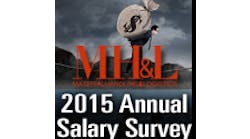Connected, “always-on” consumers who expect instant information, a multitude of choices and flexible, real-time purchase and delivery options are driving change in the retail supply chain. Leading retailers have adopted technologies and practices to help them with demand forecasting, promotion, pricing, inventory management, and transportation. Rising transportation costs and potential efficiencies are driving advances in transportation management, according to Fabrizio Brasca, vice president, global logistics, JDA Software. Transportation trends have been a popular topic at the National Retail Federation’s 101st Annual Convention and Expo in New York City this week.
“Retailers must evolve their sourcing and transportation strategies to be prepared for changing market dynamics,” he said. “As such, evaluating their transportation planning systems to optimize the movement of goods across the distribution channel is a must in 2012.”
He said logistics professionals should be prepared for the following trends:
Multi-Channel Retailing. The recent increase in parcel activity due to direct consumer fulfillment is changing the modal mix for retailers, resulting in new transportation challenges. Adopting an integrated, holistic approach to transportation processes and systems will help better position retailers to consider added volume as part of their standard supply chain policies. As a result, they will have the ability to allocate their modal strategy more evenly across the network to keep service levels high and meet consumer demand for on-time shipments.
Shelf-Connected Supply Chain. Retailers and consumer goods manufacturers must quickly respond to the choices consumers make at the shelf and across all buying channels. Key to the shelf-connected supply chain is the practice of intelligent and localized assortments to provide customers with the choices they want. This must be achieved with the right transportation network to support it. Manufacturers must fine-tune their logistics systems so that they can deliver on-time and in-full.
Pop-Up Retail. Popularized by the seasonal Halloween costume and holiday toy locations, pop-up retail stores have risen in popularity. This has given big-box retailers much to consider when it comes to appealing to seasonal niche markets and creating unique shopping environments that engage customers and increase brand relevance. But with many pop-up stores, space is limited; making carefully-timed shipments critical in ensuring a regular pipeline of product is headed to the store. For the many mobile pop-ups that literally disappear at the end of each day, only a small amount of stock can be stored. These conditions change the transportation network dynamic through smaller and more frequent shipments, which have the potential to increase network costs. Therefore, retailers must focus on network optimization strategies to mitigate complexity and cost.

